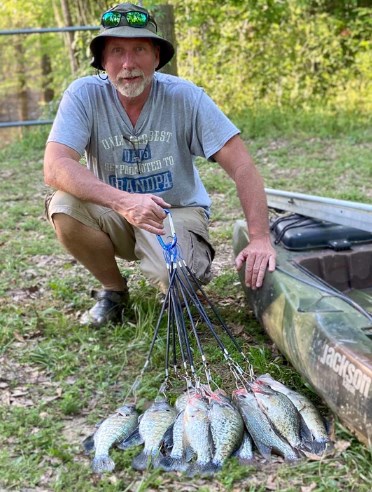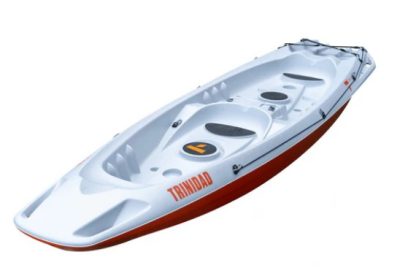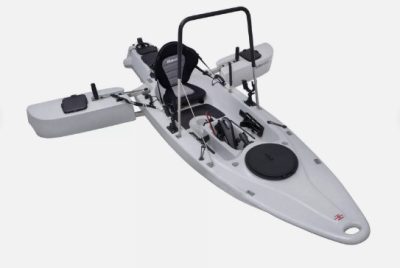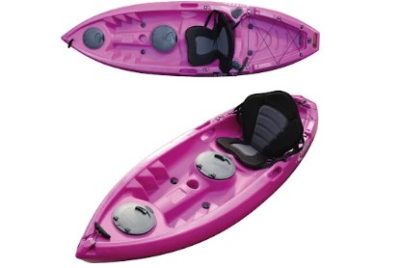Fish Stringer Kayak
Introduction
Kayak fishing is an exhilarating way to connect with nature, offering a unique blend of adventure and relaxation. One essential tool that every kayak angler should consider is a fish stringer. In this guide, I’ll walk you through everything you need to know about fish stringers for kayak fishing, from why they’re useful to how to choose the best one for your needs.
Why Use a Fish Stringer for Kayak Fishing?
Keeping Your Catch Fresh

There’s nothing worse than catching a great fish only to have it spoil before you get back to shore. A fish stringer keeps your catch fresh by allowing it to stay in the water, maintaining its temperature and freshness.
Maximizing Space on Your Kayak
Kayaks are known for their limited space. By using a fish stringer, you can save valuable room on your kayak for other essential gear. The stringer keeps your fish out of the kayak, giving you more space to maneuver.
Ensuring Safety and Organization
Having a fish flopping around in your kayak can be chaotic and even dangerous. A fish stringer keeps your catch securely in the water, reducing the risk of accidents and helping you stay organized.
Types of Fish Stringers
Rope Stringers
Features and Benefits
Rope stringers are simple yet effective. They consist of a durable rope with metal spikes at either end to secure the fish. They are lightweight and easy to use, making them a popular choice among kayak anglers.
Best Uses
Rope stringers are best for smaller to medium-sized fish. They’re great for casual fishing trips where simplicity and ease of use are key.
Chain Stringers
Features and Benefits

Chain stringers are made of a series of metal clips linked by a chain. Each clip holds a fish securely, making them ideal for anglers targeting multiple catches in a single outing.
Best Uses
Chain stringers are suitable for various sizes of fish and are especially useful when you plan to catch and keep multiple fish. They’re more durable and can handle rougher conditions than rope stringers.
Metal Clip Stringers
Features and Benefits
Metal clip stringers feature individual clips made of stainless steel or other corrosion-resistant metals. They offer superior durability and can securely hold larger fish without risk of breaking.
Best Uses
These stringers are perfect for serious anglers who often catch larger species. They are designed to withstand tough conditions and are ideal for both fresh and saltwater environments.
How to Choose the Right Fish Stringer fpr Your Kayak
Consider Your Fishing Environment
Think about where you typically fish. Are you in calm lakes or fast-flowing rivers? The environment can affect the type of stringer you need. For rough waters, a more durable metal clip stringer might be the best choice.
Evaluate the Stringer’s Material and Durability
Choose a stringer made from high-quality materials that can withstand the elements. Stainless steel and corrosion-resistant metals are great for durability, especially if you fish in saltwater.
Check for Ease of Use

The stringer should be easy to attach and detach from your kayak. Look for designs that allow quick and simple operation, especially if you often move spots or need to access your catch quickly.
Think About Storage and Accessibility
Consider how you’ll store the stringer when it’s not in use. It should be easy to stow away without taking up too much space. Also, ensure it can be easily accessed when you need it.
Setting Up Your Fish Stringer on a Kayak
Attaching the Stringer Securely
Secure attachment is crucial for both the safety of your catch and your kayak. Use sturdy attachment points like cleats or dedicated stringer hooks. Make sure the stringer is firmly anchored to avoid losing your fish.
Optimal Placement for Balance and Access
Place the stringer in a spot that maintains your kayak’s balance. Typically, this would be alongside or behind the kayak where you can easily reach it without disturbing your paddling.
Safety Tips While Using a Stringer
Always check the stringer for wear and tear before each trip. Ensure that the attachment points are secure and that the stringer isn’t damaged. Regular inspections can prevent accidents and loss of your catch.
Tips for Using a Fish Stringer Effectively
Handling the Fish Properly
When placing fish on the stringer, do it quickly and efficiently to minimize stress on the fish and maintain its freshness. Avoid injuring the fish more than necessary to ensure it stays fresh and secure.
Maintaining Cleanliness

Keep your stringer clean to prevent the build-up of bacteria and odors. Rinse it thoroughly after each use, especially if you’ve been fishing in saltwater. A clean stringer is essential for preserving the quality of your catch.
Quick Access for Fast Action
Set up your stringer in a way that allows you to quickly access it. This is particularly important during fast-paced fishing sessions where you may need to string multiple fish quickly.
Common Mistakes to Avoid with Fish Stringers
Overloading the Stringer
Avoid putting too many fish on the stringer at once. Overloading can cause the stringer to break or become difficult to manage, risking the loss of your catch and potentially unbalancing your kayak.
Improper Attachment
Ensure the stringer is properly attached to your kayak. Improper attachment can lead to loss of fish or even damage to your kayak. Double-check all connections before setting out.
Neglecting Stringer Maintenance
Regular maintenance of your stringer is essential. Neglecting it can lead to failures at critical moments. Clean and inspect it regularly, replacing any worn or damaged parts as needed.
Maintaining and Caring for Your Fish Stringer
Regular Cleaning and Inspection
After each fishing trip, clean your stringer thoroughly with fresh water. Inspect it for any signs of wear or damage. Regular maintenance ensures it stays in good working condition and extends its lifespan.
Proper Storage

Store your stringer in a dry, cool place away from direct sunlight. Avoid leaving it in damp areas where it could rust or degrade. Proper storage keeps it ready for your next adventure.
Replacing Worn-Out Parts
Over time, parts of your stringer may wear out. Regularly check for any components that need replacing, such as clips or ropes. Keeping your stringer in top shape ensures it remains reliable.
Conclusion
A fish stringer is an invaluable tool for any kayak angler, providing a practical solution for keeping your catch fresh and your kayak organized. By choosing the right type of stringer and maintaining it properly, you can enhance your fishing experience significantly. Whether you’re a seasoned pro or a newbie to kayak fishing, understanding how to use and care for a fish stringer will make your time on the water more enjoyable and productive.
FAQs
1. What type of fish stringer is best for large fish?
Metal clip stringers are best for large fish due to their superior durability and secure holding capabilities.
2. How do I attach a fish stringer to my kayak?
Use sturdy attachment points like cleats or dedicated stringer hooks to secure the stringer to your kayak, ensuring it’s firmly anchored.
3. Can I use the same fish stringer in both fresh and saltwater?
Yes, but ensure the stringer is made of corrosion-resistant materials like stainless steel to withstand saltwater conditions.
4. How often should I clean my fish stringer?
Clean your fish stringer after every fishing trip to prevent bacteria build-up and odors, especially after fishing in saltwater.
5. What should I do if my fish stringer starts to rust?
If your fish stringer starts to rust, it’s best to replace it to ensure the safety and quality of your catch. Regular maintenance can help prevent rusting.




